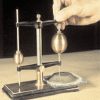The setting mechanism of mineral trioxide aggregate
- PMID: 28955558
- PMCID: PMC5573456
- DOI: 10.17096/jiufd.50128
The setting mechanism of mineral trioxide aggregate
Abstract
Mineral trioxide aggregate (MTA) is a powder containing calcium silicate composed of hydrophilic particles which harden at the presence of moisture. MTA was initially introduced as a root end filling material. Due its practical advantages that include superior biocompatility, effective sealing capability, and the ability to improve regeneration of the pulp and peripheral root tissues, it is used in different clinical applications such as pulp capping, apexification, pulpotomy and perforation. Despite being a promising material in endodontic treatment, MTA is not commonly used. Long setting time is the main clinical disadvantage of MTA. The aim of this review is to provide an overview of the current literature concerning the setting mechanism of MTA, accelerators and devices used to evaluate various steps of the hardening process.
Keywords: Mineral trioxide aggregate; gillmore; setting; vicat.
Conflict of interest statement
Conflict of interest: None declared.
Figures
Similar articles
-
Mineral trioxide aggregate and other bioactive endodontic cements: an updated overview - part II: other clinical applications and complications.Int Endod J. 2018 Mar;51(3):284-317. doi: 10.1111/iej.12843. Epub 2017 Oct 11. Int Endod J. 2018. PMID: 28846134 Review.
-
Calcium silicate-based cements: composition, properties, and clinical applications.J Investig Clin Dent. 2017 May;8(2). doi: 10.1111/jicd.12195. Epub 2015 Oct 5. J Investig Clin Dent. 2017. PMID: 26434562 Review.
-
Mineral trioxide aggregate and other bioactive endodontic cements: an updated overview - part I: vital pulp therapy.Int Endod J. 2018 Feb;51(2):177-205. doi: 10.1111/iej.12841. Epub 2017 Sep 21. Int Endod J. 2018. PMID: 28836288 Review.
-
Mineral trioxide aggregate material use in endodontic treatment: a review of the literature.Dent Mater. 2008 Feb;24(2):149-64. doi: 10.1016/j.dental.2007.04.007. Epub 2007 Jun 21. Dent Mater. 2008. PMID: 17586038 Review.
-
Mineral trioxide aggregate--a review.J Clin Pediatr Dent. 2009 Fall;34(1):1-7. doi: 10.17796/jcpd.34.1.n1t0757815067g83. J Clin Pediatr Dent. 2009. PMID: 19953801 Review.
Cited by
-
In Vitro Comparison of Differences in Setting Time of Premixed Calcium Silicate-Based Mineral Trioxide Aggregate According to Moisture Content of Gypsum.Materials (Basel). 2023 Dec 21;17(1):35. doi: 10.3390/ma17010035. Materials (Basel). 2023. PMID: 38203889 Free PMC article.
-
Evaluation of Root Perforation Treatments with Mineral Trioxide Aggregate: A Retrospective Case Series Study.Iran Endod J. 2019 Spring;14(2):144-151. doi: 10.22037/iej.v14i2.22769. Iran Endod J. 2019. PMID: 36855444 Free PMC article.
-
Biomimetic approaches and materials in restorative and regenerative dentistry: review article.BMC Oral Health. 2023 Feb 16;23(1):105. doi: 10.1186/s12903-023-02808-3. BMC Oral Health. 2023. PMID: 36797710 Free PMC article. Review.
-
Bioceramics in Endodontics: Limitations and Future Innovations-A Review.Dent J (Basel). 2025 Apr 1;13(4):157. doi: 10.3390/dj13040157. Dent J (Basel). 2025. PMID: 40277487 Free PMC article. Review.
-
Assessment of LASER- induced precipitation of MTA-nanoparticles on root canal dentin surface.BDJ Open. 2025 Apr 19;11(1):41. doi: 10.1038/s41405-025-00322-y. BDJ Open. 2025. PMID: 40253367 Free PMC article.
References
Publication types
LinkOut - more resources
Full Text Sources
Other Literature Sources




